On this blog, I published many pieces about Ray Dalio’s the Changing World Order series (Apr 2020, Nov 2022, Feb 2023, etc.), which many of you continue to visit. Ray has been diligent in sharing updates since then, and recently, he released the “Great Powers Index: 2024” in Sep 2024. This new report is packed with insights on the trajectory of 24 major nations and gives us a detailed outlook on their power dynamics over the next decade.
I’ve broken down some of the most important takeaways from his 2024 report and offer my reflections on how these findings could shape global geopolitics and personal finance over the next 5–50 years. Also, this report is close to 200 page long so in case you have specific questions or just want to explore the report yourself, I created this GPT as an assistant. It ingested the entire report with tables and will only reference the report when answering questions. You can access the GPT Global Power Insights here.)
Table of Contents
- 1. The US: still #1 with no change in score after 2 years
- 2. How Population Size Impacts National Power: A Look at Total vs. Per Capita Strength
- 3. Direct comparison between the US and China across key dimensions (using Sep 2024 data)
- 4. China: A rising power with strategic challenges
- 5. Other interesting tidbits
1. The US: still #1 with no change in score after 2 years
While the remarks from Dalio says that the US remains the most powerful country, but it is in gradual decline, we can see the decline is relatively slow. In fact, the US’ empire score remains largely unchanged between Apr 2022 – Jul 2024.
The U.S. ranks #1 in several key areas like military strength, financial markets, education, and innovation. However, troubling signs are emerging, particularly in internal conflicts, which are at the highest level since 1900. The wealth and values gap continues to widen, and external conflicts, particularly with China, are escalating .
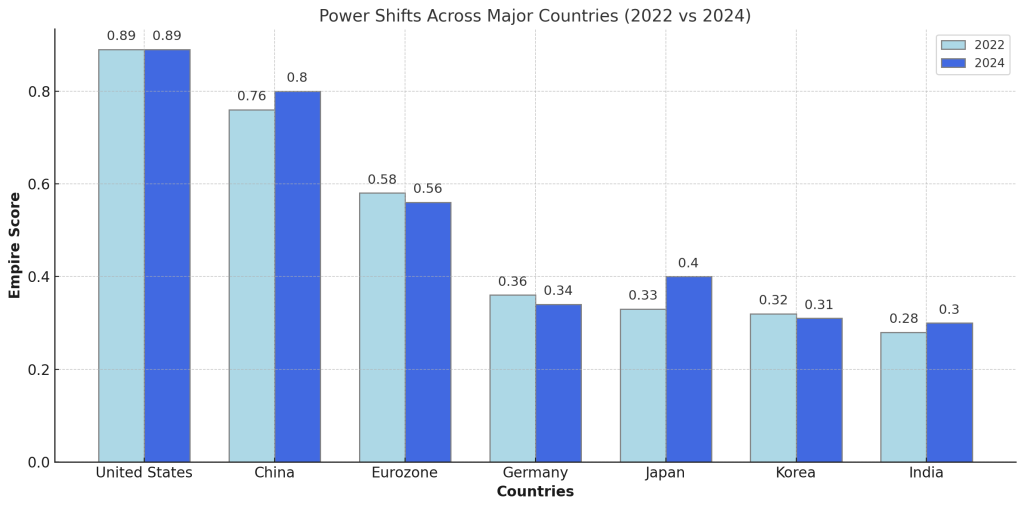
2. How Population Size Impacts National Power: A Look at Total vs. Per Capita Strength
This year, Ray included the per capital score as well for each country and it shows a very different picture. The numbers speak for themselves.
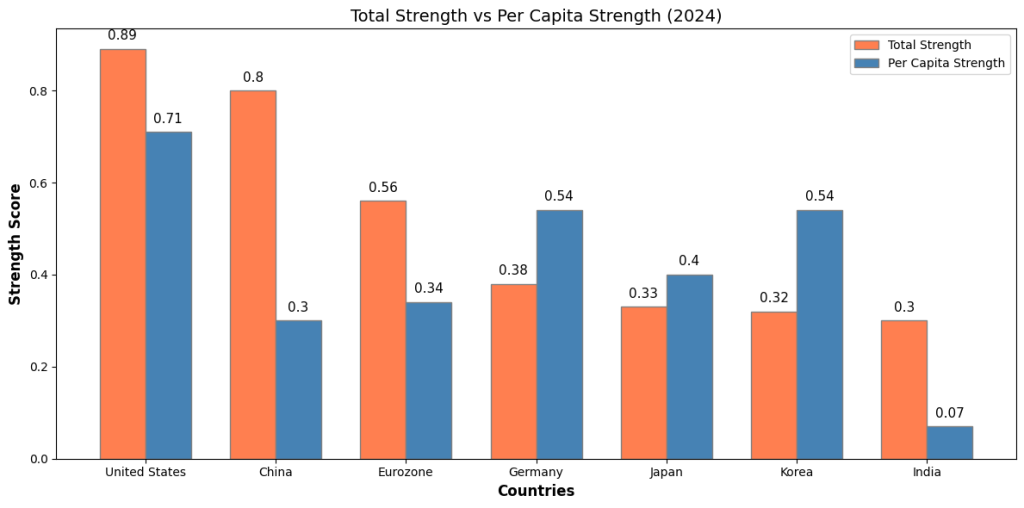
Singapore demonstrates the most extreme contrast, where its total strength is (relatively) low (0.24), but its per capita strength (0.89) is among the highest, highlighting its efficiency and productivity relative to its small population.
3. Direct comparison between the US and China across key dimensions (using Sep 2024 data)
Military Strength and Economic Output are strong indicators of hard power.
Trade and Innovation & Technology provide insights into global economic influence and future growth potential.
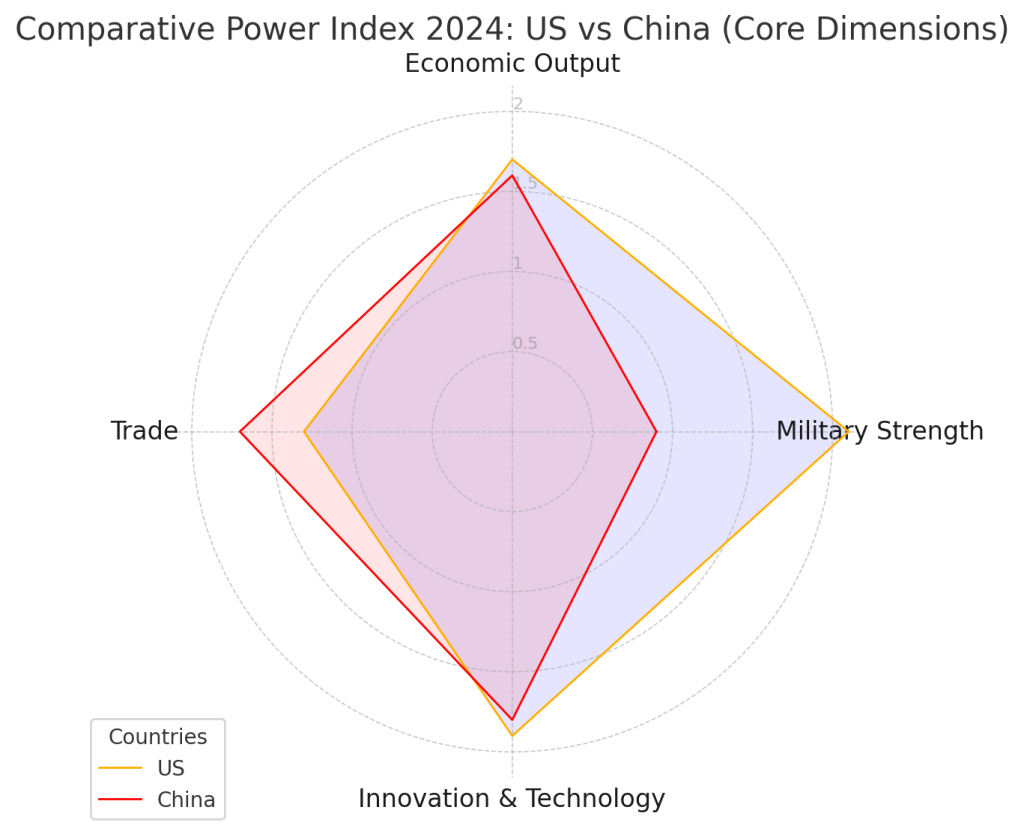
If you want to look at a more extended version of the comparison between the two countries, here it is:
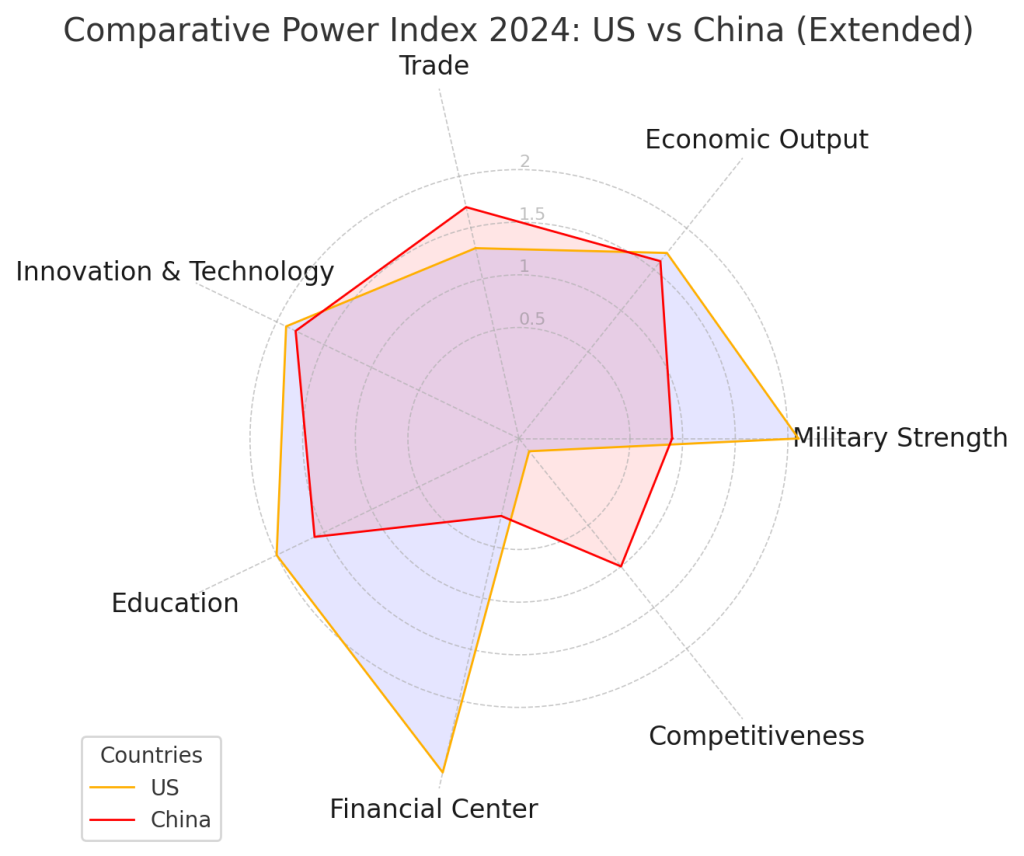
4. China: A rising power with strategic challenges
Strengths: China’s innovation, technology, education, and trade continued to be its key strengths, placing it firmly as the second most powerful country globally. Its position in these areas strengthened over time.
Challenges: China faced increased challenges from its rising debt levels and a weakened financial center, which could hamper its growth and resilience. Additionally, geopolitical tensions with the U.S. remained a significant external risk that had worsened between 2022 and 2024.
Outlook: While China continues to grow and solidify its position in global trade and innovation, its trajectory has slowed, with concerns about debt sustainability and rising external conflict risks shaping its future.
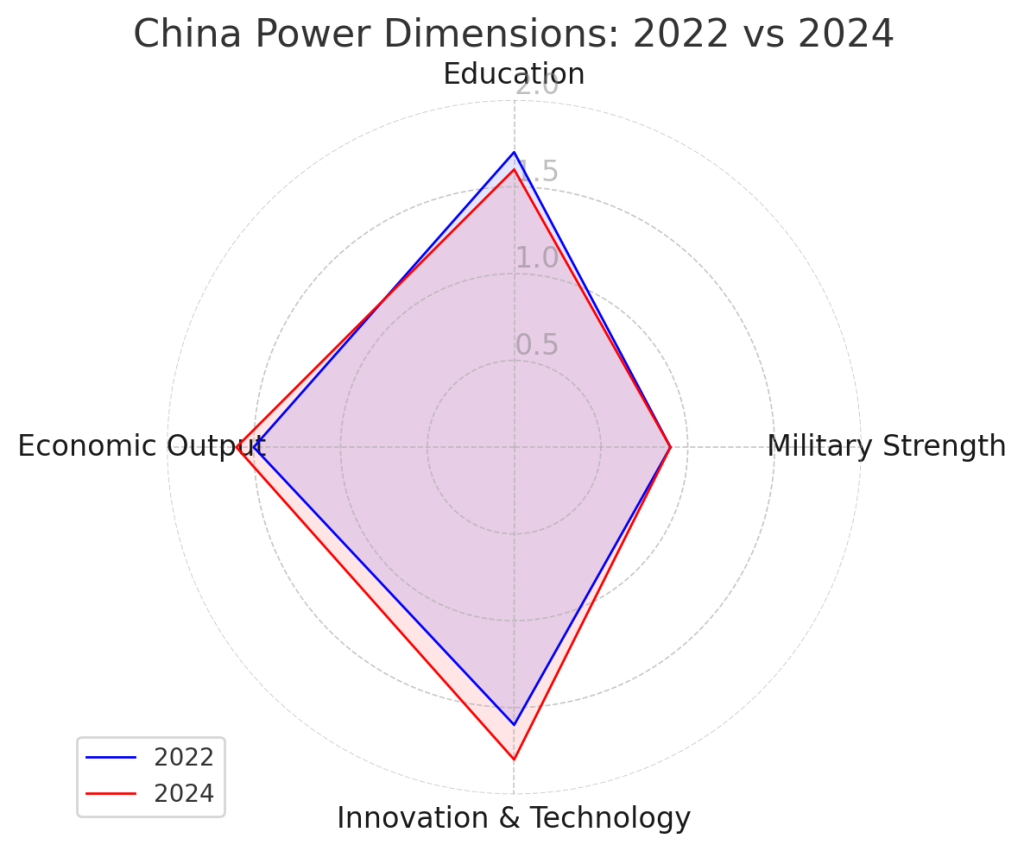
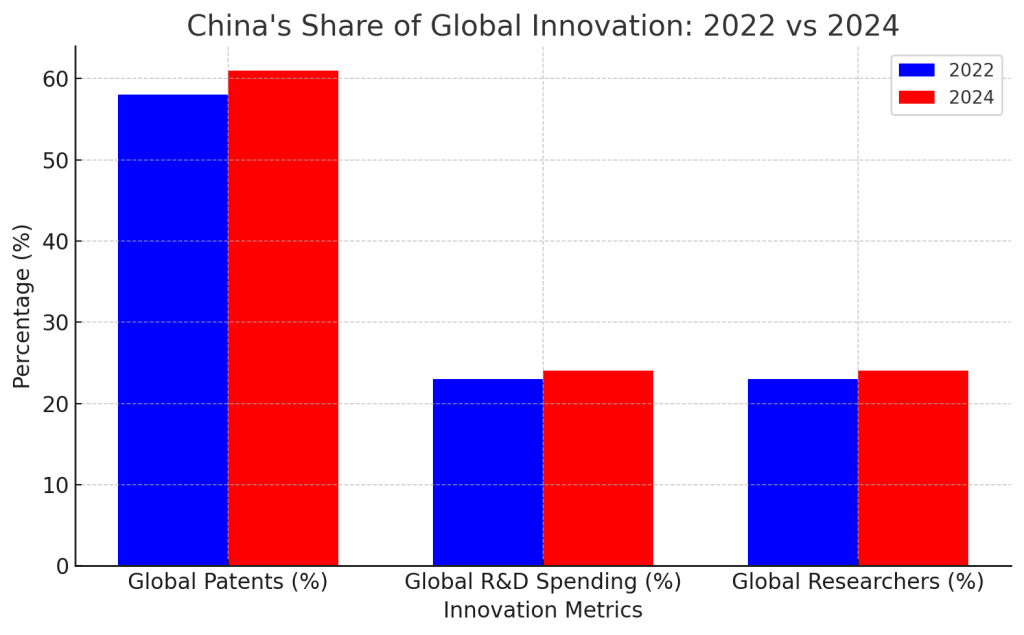
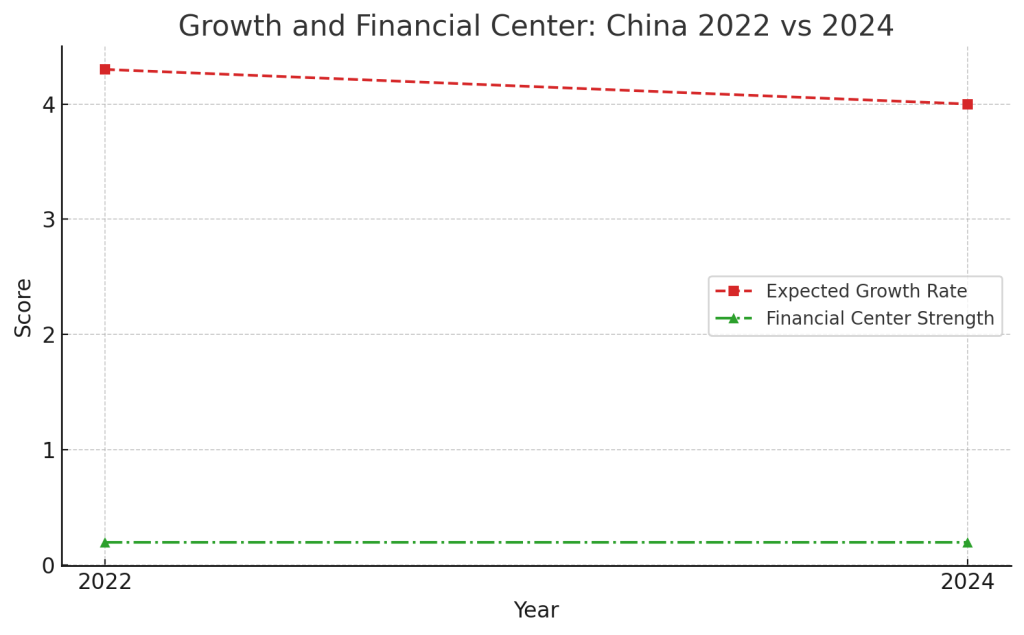
5. Other interesting tidbits
Germany’s Flat Trajectory
Germany, ranked as the 4th strongest power, has mixed strengths. “The key strength of Germany is its effective allocation of labor and capital. Its weaknesses are its relatively expensive labor (on a quality-adjusted basis), its relative lack of natural resources, and its relatively weak military. The eight major measures of power are somewhat weak today and have, in aggregate, moved sideways over the last 20 years.” (excerpt from the report)
India growth potential
India is predicted to have one of the highest growth rates over the next decade, at 6.3%, despite its weaknesses in innovation, education, and governance.
“The key strengths of India are its strong economic and financial position, its cost-competitive labor (on a quality-adjusted basis), and its people’s self-sufficiency and strong work ethic. Its weaknesses are its bad reading on innovation and technology, its corruption and inconsistent rule of law, and its lack of reserve currency status. The eight major measures of power are mixed today but have, in aggregate, risen over the last 20 years. In particular, India’s innovation and technology, its importance as a financial center, and its relative military strength are strengthening.“
Explore these power dynamics through conversation. Generate your own analytical podcast episodes about global power shifts using https://podcast.chandlernguyen.com. Whether you want to explore US-China relations, emerging markets like India, or the role of innovation in national power, create engaging audio content that brings these data points to life through natural dialogue.
That’s all from me for now. Feel free to leave your comments or questions below.
Chandler